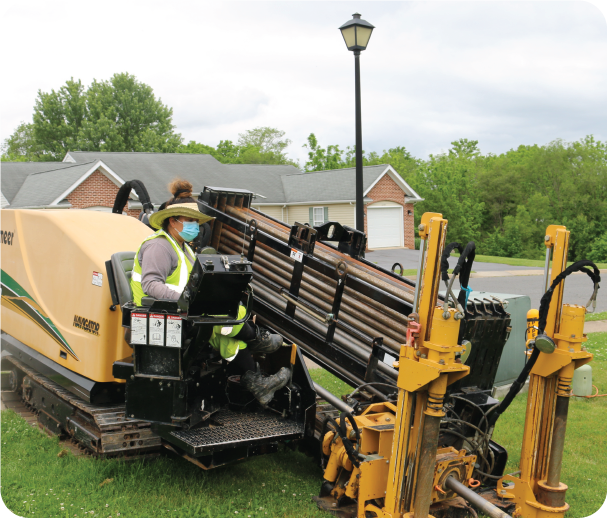Why Choose Shentel Fiber?
Shentel has been serving communities like yours for over 100 years.
We bring the technology—and the people—you can count on.
Designed for the Internet
Fiber was created specifically for the internet, providing superior reliability and faster speeds.
Better Coverage
Fiber can carry a signal farther than other methods without the need for amplifiers, meaning less weak points.
Fastest Symmetrical Speeds
Fiber internet allows your upload speeds to be equal to your download speeds. Shentel Fiber offers speeds up to 5 Gig.
Simple Setup
Fiber may sound complicated, but the installation process isn't any more costly or complicated than other internet services.
Direct Connection
Get the full benefit of a fully fiber network, all the way to your door, for faster speeds and superior reliability.
Future-Proof
Fiber lines don't change much. Any technological advancements happen in the office, so upgrades are fast and easy.
More about High Speed Fiber construction
As we build a fiber–to-the-home network, you may notice construction in your neighborhood. Watch this video or scroll down to find out what to expect during this process.
Questions about fiber construction or installation?
Let us know if you have any comments or concerns about fiber installation in your area using the form below or call 866-997-6474.
Step by step expectations
Step 1: Planning
Shentel works with the city to design the fiber-optics route.
Step 2: Mark Utilities
Before construction begins, Shentel calls 811 to safely mark existing public utilities using eco-friendly spray paint and flags.
Step 3: Place Fiber Optics
Shentel partners with construction crews to install the aerial and underground fiber optic cables. This may involve digging trenches or directional boring.
Step 4: Splice Fiber
Shentel technicians splice the fiber cables that will connect your home and tests the Internet connection, then restore any disturbed areas of the property.
Step 5: Order Fiber Internet Service
When you order fiber Internet service, Shentel connects the fiber to your home in preparation for installation.
Step 6: Enjoy Internet Service
After fiber installation is complete, start enjoying fast, reliable fiber internet!

Get ready to enjoy fast, reliable fiber internet
Once you’ve received a door hanger, that means Shentel or a Shentel Contractor will be working on or around your property to place fiber optic lines in about 24 hours.
Public and private utility lines
Public Utility Lines
You may notice flags and/or paint markings indicating the proposed path of the new fiber cables and the location of the existing utilities on your property.
Private Utility Lines
Please be advised that private lines like sprinkler systems or invisible fences are unable to be marked. If you have any private underground lines, you will need to mark those lines to avoid any damage to those facilities.
